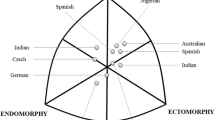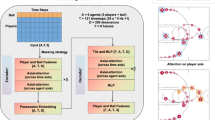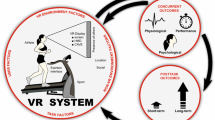Abstract
Traditional coaches need to rely on experience and intuition to adjust athletes’ movements and postures, which has the problems of strong subjectivity and unstable effects. In this paper, an image optical processing method based on artificial intelligence is proposed to realize the adaptive adjustment of aerobics athletes. The research uses the image optical processing technology to collect and analyze the movement of athletes in the training process and extract the key movement parameters. Then, combined with artificial intelligence algorithm, the extracted action parameters are analyzed and compared, so as to achieve accurate evaluation and adjustment of athletes’ actions. Finally, the adjustment plan is applied to the training of athletes, and through real-time monitoring and feedback mechanisms, the athletes’ movements and postures are continuously adjusted and optimized. Through experiments and practical applications, the system can accurately determine the movements and postures of athletes, and provide corresponding adjustment plans based on the actual situation. Compared with traditional manual adjustments, the system has higher accuracy and stability, which can effectively improve the technical level and performance ability of athletes.





Similar content being viewed by others
Data availability
The data will be available upon request.
References
Feng, T.: Mask RCNN-based single shot multibox detector for gesture recognition in physical education. J. Appl. Sci. Eng. 26(3), 377–385 (2022)
Hu, K., Ding, Y., Jin, J., Weng, L., Xia, M.: Skeleton motion recognition based on multi-scale deep spatio-temporal features. Appl. Sci. 12(3), 1028–1031 (2022)
Kaplun, D., Voznesensky, A., Veligosha, A.V., Kalmykov, I.A., Sarma, K.K.: Technique to adjust adaptive digital filter coefficients in residue number system based filters. IEEE Access. 9, 82402–82416 (2021)
Krupitzer, C., Gruhl, C., Sick, B., Tomforde, S.: Proactive hybrid learning and optimisation in self-adaptive systems: The swarm-fleet infrastructure scenario. Inf. Softw. Technol. 145, 106826 (2022)
Li, H., Zhang, H., Zhao, Y.: Design of computer-aided teaching network management system for college physical education. Comput.-Aided Des. Appl. 18(S4), 152–162 (2021)
Liokaftos, D.: Natural bodybuilding: An account of its emergence and development as competition sport. Int. Rev. Sociol. Sport. 54(6), 753–770 (2019)
Lu, Z., Ye, D., Chen, Q., Liu, C., Dong, H., Cheng, D.: Adaptive adjustment strategy for walking characteristics of single-legged exoskeleton robots. Machines. 10(2), 134–138 (2022)
Ning, G., Zhang, Z., He, Z.: Knowledge-guided deep fractal neural networks for human pose estimation. IEEE Trans. Multimed. 20(5), 1246–1259 (2017)
Orth, D., van der Kamp, J., Button, C.: Learning to be adaptive as a distributed process across the coach–athlete system: Situating the coach in the constraints-led approach. Phys. Educ. Sport Pedagogy. 24(2), 146–161 (2019)
Qiang, W., He, Y., Guo, Y., Li, B., He, L.: Exploring underwater target detection algorithm based on improved SSD. Xibei Gongye Daxue Xuebao/J. Northwestern Polytech. Univ. 38(4), 747–754 (2020)
Sahay, R., Meng, W., Jensen, C.D.: The application of software defined networking on securing computer networks: a survey. J. Netw. Comput. Appl. 131, 89–108 (2019)
Steinhauser, M., Andersen, S.K.: Rapid adaptive adjustments of selective attention following errors revealed by the time course of steady-state visual evoked potentials. Neuroimage. 186, 83–92 (2019)
Wang, H., Liu, W., Xiong, N.N., Zhang, S., Wang, T.: LIAA: a listen interval adaptive adjustment scheme for green communication in event-sparse IoT systems. Inf. Sci. 584, 235–268 (2022)
Wenxuan, D., Qiang, H.U., Xu, Y.U.: Review of deep convolution applied to target detection algorithms. J. Front. Comput. Sci. Technol. 16(5), 1025–1030 (2022)
Zhong, F., Li, M., Zhang, K., Hu, J., Liu, L.: DSPNet: a low computational-cost network for human pose estimation. Neurocomputing 423, 327–335 (2021)
Funding
The authors have not disclosed any funding.
Author information
Authors and Affiliations
Contributions
ZY has contributed to the paper’s analysis, discussion, writing, and revision.
Corresponding author
Ethics declarations
Conflict of interest
The authors declare that they have no competing interests.
Ethical approval
Not applicable.
Additional information
Publisher’s Note
Springer Nature remains neutral with regard to jurisdictional claims in published maps and institutional affiliations.
Rights and permissions
Springer Nature or its licensor (e.g. a society or other partner) holds exclusive rights to this article under a publishing agreement with the author(s) or other rightsholder(s); author self-archiving of the accepted manuscript version of this article is solely governed by the terms of such publishing agreement and applicable law.
About this article
Cite this article
Yong, Z. Simulation of image optical processing based on artificial intelligence in the motion adaptive adjustment system of aerobics athletes. Opt Quant Electron 56, 343 (2024). https://doi.org/10.1007/s11082-023-05925-z
Received:
Accepted:
Published:
DOI: https://doi.org/10.1007/s11082-023-05925-z




